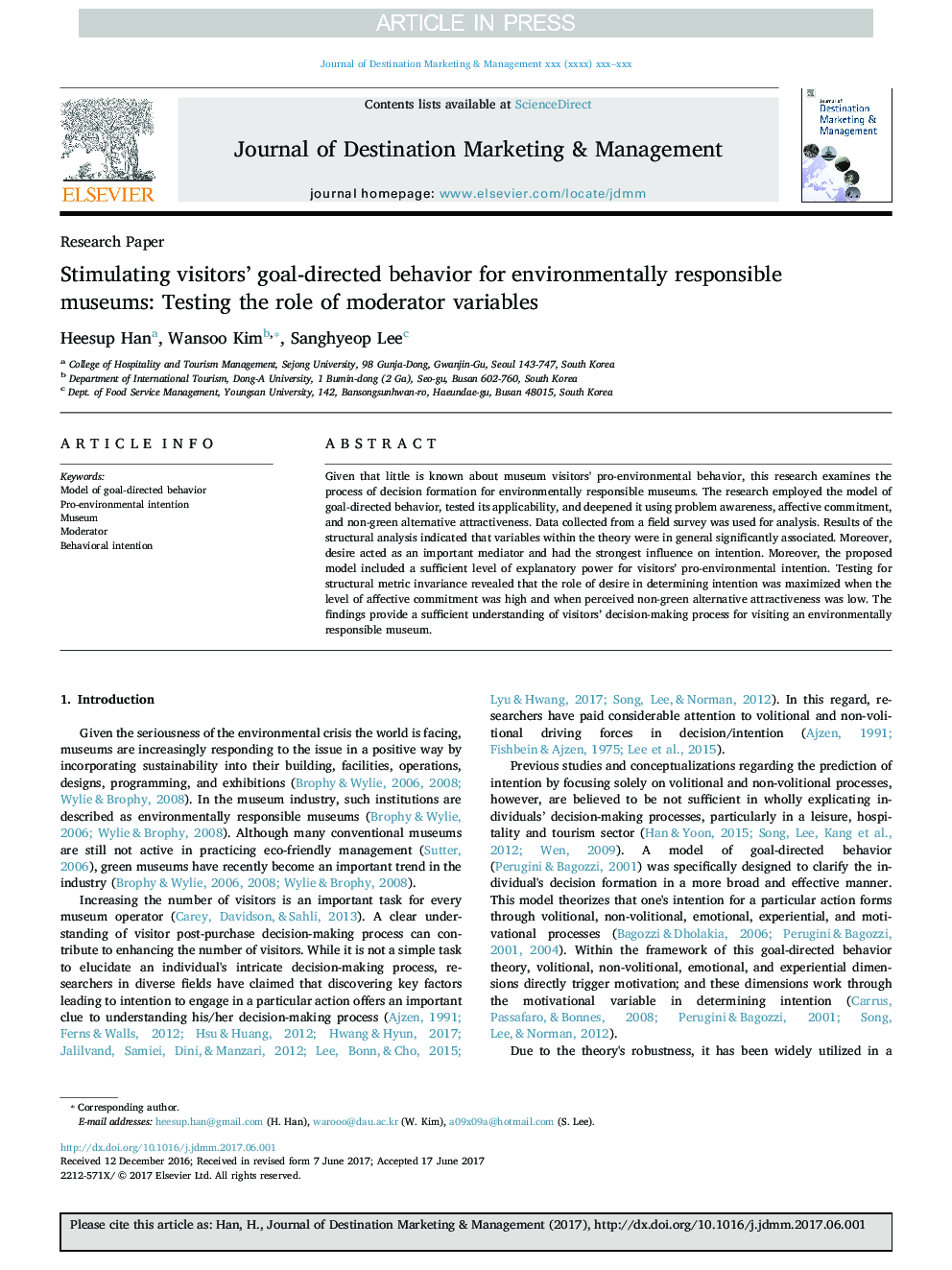| Article ID | Journal | Published Year | Pages | File Type |
|---|---|---|---|---|
| 7419623 | Journal of Destination Marketing & Management | 2018 | 11 Pages |
Abstract
Given that little is known about museum visitors' pro-environmental behavior, this research examines the process of decision formation for environmentally responsible museums. The research employed the model of goal-directed behavior, tested its applicability, and deepened it using problem awareness, affective commitment, and non-green alternative attractiveness. Data collected from a field survey was used for analysis. Results of the structural analysis indicated that variables within the theory were in general significantly associated. Moreover, desire acted as an important mediator and had the strongest influence on intention. Moreover, the proposed model included a sufficient level of explanatory power for visitors' pro-environmental intention. Testing for structural metric invariance revealed that the role of desire in determining intention was maximized when the level of affective commitment was high and when perceived non-green alternative attractiveness was low. The findings provide a sufficient understanding of visitors' decision-making process for visiting an environmentally responsible museum.
Related Topics
Social Sciences and Humanities
Business, Management and Accounting
Business, Management and Accounting (General)
Authors
Heesup Han, Wansoo Kim, Sanghyeop Lee,
